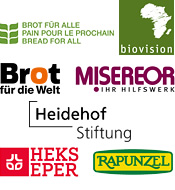News
28.09.2016 | permalink
Large-scale agricultural investments cause hunger and poverty in Ethiopia

Ethiopia’s development plans focused on large-scale agricultural investments have perpetuated poverty and hunger and led to forced evictions of local communities and the seizure of land and water resources, a new study shows. According to the report released on September 27 by the Oakland Institute, a US-based policy think tank, efforts to tackle food insecurity have failed despite the country’s acclaimed economic miracle and double-digit growth rates. “In 2016, over 18 million people required food assistance in Ethiopia – a crisis attributed to El Niño-induced drought,” said Anuradha Mittal, Executive Director of the Oakland Institute. “This narrative, while convenient for the government and its allies, ignores the chronic food insecurity in the country – 8 to 18 million Ethiopians have depended on food or cash handouts for their survival each year over the last decade.” While some effort was made to support smallholder farmers to increase production, the key government strategy to drive development has been the promotion of large-scale industrial farming. The five-year Ethiopia Growth and Transformation Plan, launched in 2010, mainly focuses on large-scale agricultural investments, in particular for export crops such as sugar or cotton, as well as large dams for both electricity and irrigation. “By 2011, the government had earmarked 3.6 million hectares for large-scale agriculture, and recently announced that over 11.5 million hectares are available to investors,” said Frederic Mousseau, author of the report. The government also put in place the Commune Development Program, also known as “villagization” program, to resettle 1.5 million people in lowland areas which were targeted for large-scale agricultural plantations. “Tens of thousands of farmers and pastoralists have been forcibly resettled through the government’s ‘villagization’ program to free up fertile lands for investors,” says Mousseau. “With their traditional livelihoods destroyed, many people now rely on food aid for their survival.” A key government objective is to make Ethiopia one of the world’s largest sugar producers. According to the report, several sugar expansion plans are underway, including a project in the Lower Omo Valley, which will encompass up to five sugar factories and 150,000 hectares of sugarcane plantations that rely on Gibe III Dam for irrigation. The Oakland Institute warns that Gibe III could reduce the Omo River flow by as much as 70%, threatening the livelihoods of 200,000 Ethiopians and 300,000 Kenyans who depend on the downstream water flow for herding, fishing, and flood-recession agriculture. Between 2010 and 2020, sugar expansion plans will cost an estimated $11.2 billion and much more will be spent for irrigation schemes and dams. The report points out that Gibe III alone cost $1.8 billion. Drawing on lessons from Ethiopia’s past and recent experiences in Brazil, where sugarcane expansion benefited large landowners and agribusinesses at the expense of farm laborers and smallholder farmers, the author questions the logic behind the government plans. Sugar and cotton plantations in the Awash Valley, established in the 1950s, drastically reduced land and water availability for people and cattle, undermined food security, destroyed key drought coping mechanisms, and stirred up violent conflicts between different groups over the remaining resources. “Prevailing disregard of the negative impacts of the past development strategies bounds the Ethiopian government to replicate failed plantation and irrigation schemes and doom itself to repeat mistakes on a much larger scale throughout Ethiopia,” the report warns. The government would do better to reconsider its plans and promote development that will actually benefit all Ethiopians, including pastoralists and small-scale farmers. (ab)

